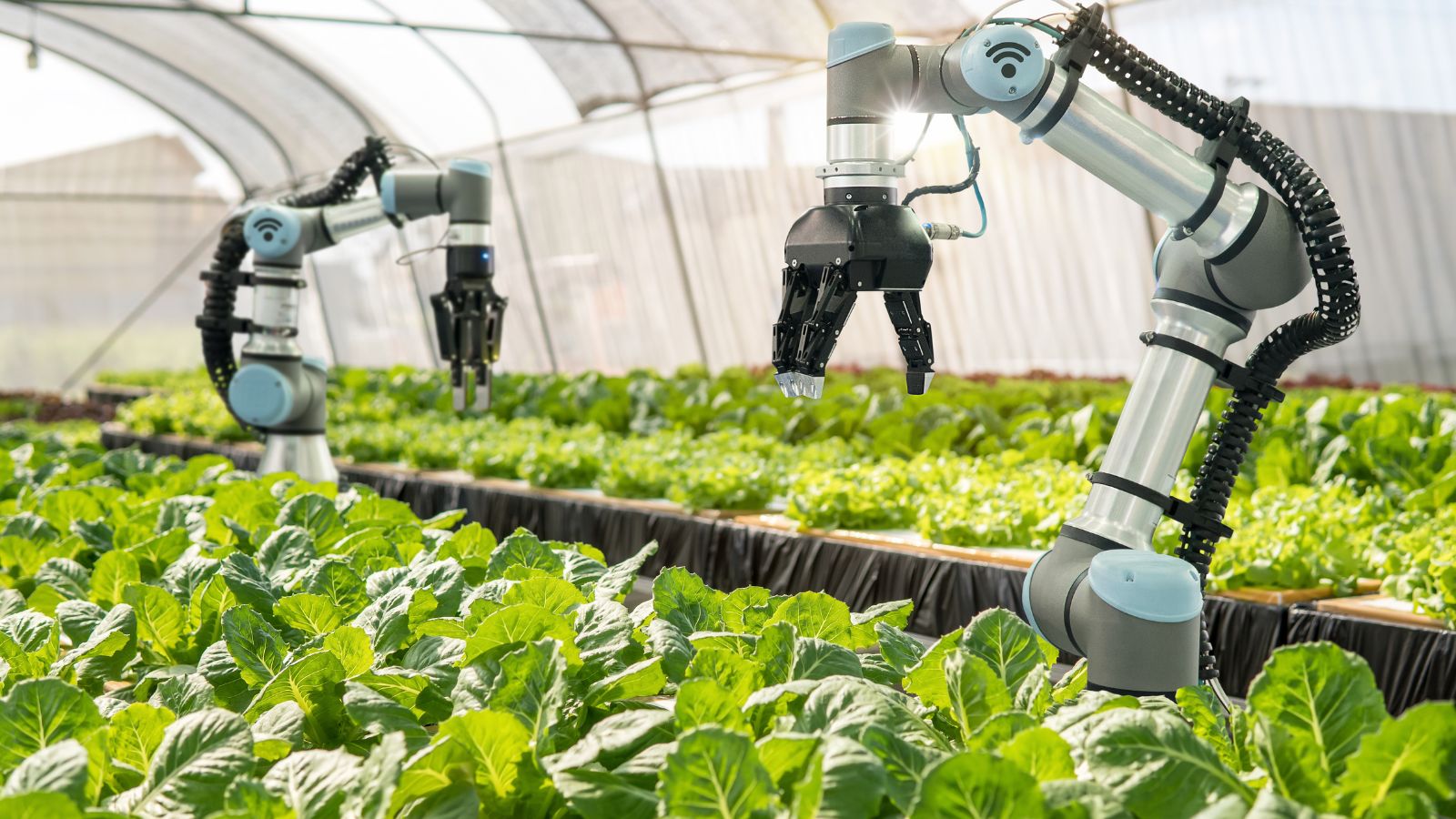While headlines often focus on housing prices, inflation trends, or oil market swings, many quieter but equally impactful Canadian economic wins are happening in the background. These aren’t flashy stock market surges or political talking points, but rather steady, sustainable developments that improve the country’s fiscal resilience, competitiveness, and living standards. Here are 21 Canadian economic wins flying under the radar.
Booming Agricultural Technology Exports

Canadian agri-tech companies are quietly expanding their global reach, exporting precision farming tools, automated harvesting systems, and sustainable crop monitoring solutions. These innovations are in demand as nations seek to modernize food production while cutting environmental impact. The federal government’s trade missions and research funding have amplified the sector’s visibility abroad. Provinces like Saskatchewan and Manitoba are leveraging their expertise in agricultural engineering to secure long-term contracts in markets such as Asia, Europe, and South America.
Northern Resource Development with Environmental Safeguards

Mining operations in the Yukon, Northwest Territories, and Nunavut are increasingly incorporating clean technology and Indigenous-led oversight into their projects. Lithium, rare earth minerals, and cobalt, critical for renewable energy and EV batteries, are being extracted under stricter environmental monitoring than in many competing regions. Agreements with local First Nations ensure revenue sharing and workforce participation, strengthening both economic and cultural stability. This measured approach not only generates export revenue but positions Canada as a supplier of ethically sourced materials.
Quiet Surge in Film and TV Production

While Vancouver and Toronto get most of the attention, smaller Canadian cities are seeing a surge in film and television production, thanks to competitive tax credits and a favorable exchange rate. Locations like Calgary, Halifax, and Winnipeg are attracting both domestic and foreign productions. This has led to increased demand for local crew, post-production services, and hospitality, pumping millions into local economies. The less congested filming environments also allow for faster production timelines, giving Canada an edge over more crowded filming hubs.
Growing Market Share in Plant-Based Protein

Canadian companies like Beyond Meat’s pea protein suppliers in Manitoba and local innovators in Saskatchewan are expanding their presence in the plant-based protein market. Global demand for meat alternatives is rising, and Canada’s ability to produce high-quality legumes efficiently gives it a competitive advantage. Processing facilities have scaled up, creating jobs in both agriculture and manufacturing. Federal and provincial investments in food innovation centres are helping companies move from concept to market faster.
AI Applications in Resource Management

Beyond the hype of consumer AI, Canadian researchers and companies are developing artificial intelligence systems for highly specific applications, such as optimizing forestry operations, monitoring fisheries, and predicting pipeline maintenance needs. These tools increase efficiency while reducing environmental impact. For example, AI-driven satellite imagery helps prevent overfishing by tracking vessel patterns. With backing from universities and targeted grants, these solutions are being commercialized domestically and internationally.
Resilient Credit Union Growth

Credit unions across the country have quietly expanded their membership and financial influence. Offering competitive interest rates, community-based lending, and more flexible policies than major banks, they have become essential for small business financing, particularly in rural and underserved areas. Their profits are reinvested locally, supporting regional economic development projects. Many are adopting digital banking solutions on par with larger institutions, increasing accessibility for younger demographics. This growth strengthens financial diversity, reducing systemic risk if major banks face instability.
Export Gains in Clean Hydrogen

Hydrogen production, particularly from Alberta’s blue hydrogen projects and Quebec’s green hydrogen initiatives, has advanced significantly. International demand for hydrogen as a clean energy source is projected to surge, and Canada’s infrastructure investments are positioning it as a credible supplier. Strategic agreements with European and Asian buyers are already in progress. These projects not only generate export revenue but also help decarbonize domestic heavy industries.
Indigenous Tourism Expansion

Indigenous-led tourism ventures have seen consistent growth, offering authentic cultural experiences in both rural and urban settings. These businesses attract international visitors looking for unique, heritage-rich travel experiences, while also creating jobs within Indigenous communities. Support programs like the Indigenous Tourism Fund provide capital and marketing assistance, enabling these ventures to scale. The economic benefits extend beyond tourism, as profits often fund local infrastructure, education, and community programs.
Rise of Canadian Logistics Hubs

Strategically located transportation hubs in cities like Winnipeg, Regina, and Moncton are benefiting from supply chain shifts and e-commerce growth. Investments in rail infrastructure, intermodal facilities, and automated warehousing have turned these cities into key freight gateways. This development reduces reliance on coastal ports, shortens delivery times, and improves resilience against global shipping disruptions. Local economies gain from steady job creation in warehousing, transport, and support services.
Medical Device Innovation Clusters

Clusters in Ontario and British Columbia are producing breakthroughs in diagnostic tools, wearable health monitors, and minimally invasive surgical equipment. Many of these devices are being exported to meet growing demand in Asia and Europe. The sector benefits from a blend of academic research, startup incubation, and established manufacturing expertise. Federal export promotion programs have helped smaller firms secure overseas contracts, while provincial governments support commercialization.
Offshore Wind Project Development

While onshore wind farms are well-known, offshore wind energy development off the coasts of Nova Scotia and Newfoundland is making progress. These projects harness stronger, more consistent winds, offering higher energy output potential. Early-stage construction contracts are generating employment in coastal communities, while partnerships with European energy firms bring technology transfer and investment. As the projects scale, they could supply both domestic grids and export markets via undersea transmission lines.
Digital Trade Facilitation Agreements

Digital trade agreements with countries like Singapore, Chile, and New Zealand simplify e-commerce by aligning digital identity standards and removing redundant approvals. They protect cross-border data flow, letting Canadian cloud firms operate globally without costly local servers. Small tech exporters benefit most, reducing compliance delays and reaching customers faster. Workshops and trade guides help businesses adapt, especially startups entering new markets.
Forestry Sector Modernization

Modernized forestry operations now produce engineered wood products like cross-laminated timber, opening high-value export markets. Automated scanning boosts yield, while biodegradable adhesives improve sustainability. By processing domestically instead of exporting raw logs, companies increase profits and reduce waste. Rural jobs become more stable as mills operate year-round. Partnerships with research institutions help develop eco-friendly products, while demand from Europe and Asia for sustainable building materials drives steady growth.
Expansion of Agri-Food Exports to Africa

Canadian grain, lentils, and canola oil are gaining traction in African markets, supported by government-backed export risk insurance. Countries like Nigeria and Kenya value Canada’s consistent quality and reliable delivery. Fortified flours and processed oils add value beyond raw commodities. Exporters often collaborate with local buyers to improve storage and distribution, ensuring freshness on arrival. These efforts build trust, creating long-term contracts.
Growth in Remote Work Infrastructure Exports

Canadian-developed remote work tools now serve governments, universities, and corporations abroad. Products include secure video platforms, collaborative software, and portable conferencing kits for low-bandwidth regions. Integration with existing systems makes adoption seamless. Export contracts often include ongoing support, generating recurring revenue. Trade promotion programs connect these companies with decision-makers worldwide via virtual showcases, lowering expansion costs. Demand is rising as hybrid work models spread globally.
Expansion of Niche Manufacturing

Specialized Canadian manufacturers excel in sectors like aerospace components, lab equipment, and cold-climate building materials. These firms often customize products in collaboration with clients, increasing loyalty and reducing competition. Precision engineering and quality standards create strong export demand. Many operate just-in-time systems, improving efficiency and minimizing waste. The high skill requirements ensure stable, well-paid jobs in their regions.
Water Technology Leadership

Canadian water tech firms export advanced filtration, reverse-osmosis systems, and leak detection networks to countries facing water scarcity. These solutions are also deployed in disaster-relief zones, boosting Canada’s global reputation. Domestic pilot projects validate innovations before export, helping secure contracts abroad. Products focus on energy efficiency and durability, making them attractive to municipalities and NGOs. As global demand for water treatment grows, Canada’s early leadership positions its companies to capture a significant share of this expanding international market.
Small-Scale Renewable Projects in Remote Communities

Renewable microgrids combining solar, wind, and battery storage are cutting diesel reliance in remote areas by up to 80%. Local installation and maintenance create jobs, while reduced fuel imports free budgets for other needs. Many projects are Indigenous-led, keeping revenue in the community. Government grants and private partnerships fund these initiatives, and performance data attracts international buyers. The result is greater energy independence, economic stability, and environmental benefits.
Growth of the Circular Economy

Canadian companies are scaling recycling and refurbishing into profitable industries. Electronics firms restore devices for resale, while construction companies reclaim steel and timber for reuse. Government procurement policies requiring recycled content create a steady domestic market. International buyers, especially in Europe, import Canadian reclaimed materials for their quality and traceability. These businesses cut landfill use, lower raw material imports, and generate skilled repair jobs.
Expansion of Educational Exports

Canadian institutions now offer online degree programs, professional certifications, and corporate training to global audiences. Courses are tailored for specific markets, such as business English in Asia or sustainability training in the Middle East. Many programs include live instructor sessions, which improves engagement. Partnerships with foreign learning centres provide local support, raising completion rates. Digital delivery lowers costs, allowing competitive pricing while maintaining quality.
Specialty Food Brand Growth in Asia

Premium Canadian foods like maple syrup, artisanal chocolates, and specialty teas are finding strong demand in Asian markets. Brands use storytelling to highlight origin and sustainability, appealing to affluent consumers. Exporters leverage e-commerce platforms like Tmall and Rakuten to reach customers without costly retail space. Government agencies assist with labeling, customs compliance, and trademark protection. As Asia’s middle class grows, interest in high-quality foreign products expands, giving Canadian producers a lucrative, long-term market for distinctive, value-added food exports.
21 Products Canadians Should Stockpile Before Tariffs Hit

If trade tensions escalate between Canada and the U.S., everyday essentials can suddenly disappear or skyrocket in price. Products like pantry basics and tech must-haves that depend on are deeply tied to cross-border supply chains and are likely to face various kinds of disruptions
21 Products Canadians Should Stockpile Before Tariffs Hit
